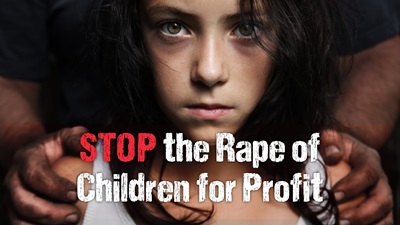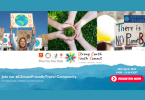This form of sexual exploitation is particularly prevalent in developing countries, where it perpetuates an exploitative and unequal relationship between affluent Western nations and less developed regions, reducing women and children to mere cheap tourist attractions (source: Montague, 1996, p. 3).
Understanding child trafficking in tourism requires viewing it as a part of the wider issue of commercial sexual exploitation, which now spans globally. This includes heinous activities such as child pornography, child trafficking, and the prostitution of children, which involve both pre- and post-pubescent minors, some as young as 3 years old (source: Barrett, 1998, p. 14).
Child sex tourism equates to forced prostitution, a term defined by Barry (1979) and Joyce Yu (source: Demleitner, 1994, p. 23) to describe a situation where victims are trapped in conditions they cannot escape, subjected to sexual violence and exploitation. In these scenarios, forced prostitution within the realm of child sex tourism is a profit-driven business that coerces women or children into providing sexual services under psychological or economic pressure, often under the threat of violence (source: Demleitner, 1994, p. 2).
Child trafficking, the illegal buying and selling of children (source: Landau, 1974, p. 781) is most rampant in nations with lower levels of economic development.
Women and children from these families are often transported across borders to markets in countries with different economic standings, a process involving coercion and sometimes outright brute force (source: Polis, 1995, p. 2).
Follow the Money

The sexual tourism industry, valued at approximately $4 billion, has forged significant connections with airlines and tour operators, aligning itself with the travel industry at large. As highlighted by Lillian Robinson, it operates akin to any multinational corporation, reaping substantial profits from the exploitation of grossly underpaid local labor.
Childhood prostitution is a harrowing facet of the pervasive global issue of human trafficking, which exacts a devastating toll on the lives of over a million children annually, pushing them into prostitution. A staggering 30 million have been robbed of their childhoods over the past three decades. In some of the most heartbreaking cases, children as young as 4 are subjected to exploitation, and forced marriages afflict an additional 4 million individuals. These atrocities underscore the urgent need for robust child protection measures and the enforcement of children’s rights.
In this grim scenario, the United States is particularly notable, accounting for almost 52% of global human trafficking, with a significant portion involving the sex trafficking of minors. Online platforms have become a critical component in the trafficking of children, facilitating a shocking 76% of transactions for underage girls. Pimps utilize these digital mediums to amass profits that can range from $150,000 to $200,000 per child each year. The vast scale of human trafficking is evidenced by its staggering annual profits of $150 billion, positioning it as the second-largest organized crime worldwide, just behind drug trafficking, and underscoring the need for stringent trafficking in persons enforcement under federal law.
Look at the Family
The grim reality continues as we delve into the lives of sex-trafficked children, with an average age of 13-14. Shockingly, one in three runaway children is targeted by a trafficker within 48 hours. Disturbing studies reveal that sexually exploited children may serve between two and thirty clients per week, resulting in an estimated base of 100 to 1500 clients per year per child. Adding to the tragedy, the majority of children are recruited into sexual exploitation by a family member or friend, deepening the emotional wounds.
Economic Impact
This disheartening portrait underscores the urgent need for concerted efforts to combat and eliminate human trafficking, a crime that preys on the most vulnerable members of society.
The economic impact resulting from the consequences of physical, psychological, and sexual violence against children could be at least $7 trillion globally. Human trafficking is a grave concern that necessitates collective efforts to combat and eliminate this organized crime.
Thailand
Thailand faces significant challenges with the sex industry’s contribution to the GDP was estimated at $6.4 billion annually in 2015. Traffickers in Thailand target children from impoverished rural backgrounds and minority ethnic regions, with Pattaya, Phuket, and northern Thailand being particularly vulnerable areas. Concerning 90% of street children surveyed in Pattaya, in 2015, were victims of child pornography. In 2007, almost 40% of sex workers in Thailand were children or minors under 18, and the Global Slavery Index (2018) reports over 600,000 victims of human trafficking in the country (source: fairplanet.org).
India
In India, the human trafficking crisis is severe, with over 2 million women and children estimated to be trafficked for sex into red-light districts. The government acknowledges that girls constitute the majority of children involved in sex trafficking. Shockingly, one child goes missing every day. eight minutes, as reported by the National Crime Records Bureau.
The trafficking methods vary, involving both abductions from homes and deception, with children lured into trafficking under the false promise of job opportunities. The issue extends beyond sexual exploitation. encompassing labor and begging. Tracking and preventing these crimes prove challenging due to the clandestine nature of trafficking and weak law enforcement (source: wikipedia.org).
Philippines
Child prostitution is on the rise in the Philippines due to the economic impact of strict anti-pandemic measures, with parents turning to the sex trade to cope with job losses. The government’s Commission on Human Rights attributes the surge to the COVID-19 pandemic, and UNICEF had previously labeled the Philippines as the “global epicenter” of live-stream sexual abuse. The pandemic has led to a 264% increase in online sexual exploitation of children, according to the advocacy group End Child Prostitution and Trafficking.
Stay-home orders and a high jobless rate have driven parents to involve their children in prostitution, often using online platforms to find clients. The Philippines is identified as the largest source of online sexual exploitation of children, with cases involving family members facilitating the abuse. Instances include a father arranging a customer for his 7-year-old son and a 9-year-old girl selling sex to taxi drivers. The situation is described as alarming by advocates, highlighting the dire economic circumstances driving such exploitation (source: voanews.com).
Pakistan
According to the International Labor Organization (ILO), between 10 – 12 million Pakistani children are forced into child labor, especially in Punjab and the Northwest Frontier Province (source: reuters.com).
Canada and Australia
In Canada, a staggering 2.4 million individuals have reported experiencing sexual victimization during their childhood (source: Canadian Centre for Child Protection, 2018). Meanwhile, in Australia, the ACCEE Child Protection Triage Unit received over 33,000 reports of online sexual exploitation. In 2021, the Australian Federal Police (AFP) pressed charges against a total of 237 individuals, involving 2,932 alleged offenses related to child abuse (source: accce.gov.au).
United States
The Bureau of Justice statistics indicate that over 1,000 children in the U.S. are arrested for prostitution annually. Children cannot consent to sex, and therefore any engagement in commercial sex with a minor is sex trafficking – not prostitution. Prostitution charges have devastating effects on trafficking survivors in both the short and long term. They make them more vulnerable to trafficking by creating “significant barriers [for] individuals who seek to escape a trafficking situation [by] finding lawful employment, safe housing and education.”
The states with the highest recorded human trafficking activity include California, Texas, and Florida. Major hotel chains, such as Marriott International, Inc., Hilton Worldwide Holdings Inc., and Wyndham Hotels & Resorts, Inc., have faced numerous lawsuits for allegedly turning a blind eye to signs of human trafficking. Financial institutions like JPMorgan Chase & Co. and Deutsche Bank Aktiengesellschaft have also been implicated.
Deutsche Bank, citing weak internal controls, opened 40 accounts for Jeffrey Epstein, who utilized them to finance a sex trafficking ring. As a key client partner of Deutsche Bank Aktiengesellschaft, Epstein exploited a nonprofit charity foundation for tax benefits and fund diversion. In response, New York regulators fined Deutsche Bank Aktiengesellschaft $150 million for its involvement.
Hotels accused of neglecting human trafficking signs include instances of malnourished and distressed individuals, excessive requests for towels and sheets, and male visitors without luggage. Wyndham Hotels & Resorts, Inc. has faced allegations of staff assisting human traffickers in soliciting children, with two of their properties accused of involvement in a child sex trafficking ring in San Diego (source: finance.yahoo.com).
The human trafficking industry is a significant economic force, generating an estimated $150 billion in annual profits. Unfortunately, the aftermath of the pandemic has driven over 70 million people into poverty, leading to desperate individuals resorting to high-interest loans and questionable job offers, according to the World Bank. The extended period of income loss has left many vulnerable.
Tragically, as long as there is a market willing to pay for children and buyers with the motive, means, and opportunities to purchase, the human trafficking industry will persist and, regrettably, thrive.
© Dr. Elinor Garely. This copyright article, including photos, may not be reproduced without written permission from the author.
This is an 8-part series. Read previous articles below.
INTRODUCTION:
PART 1:
Stay tuned for part 3.























